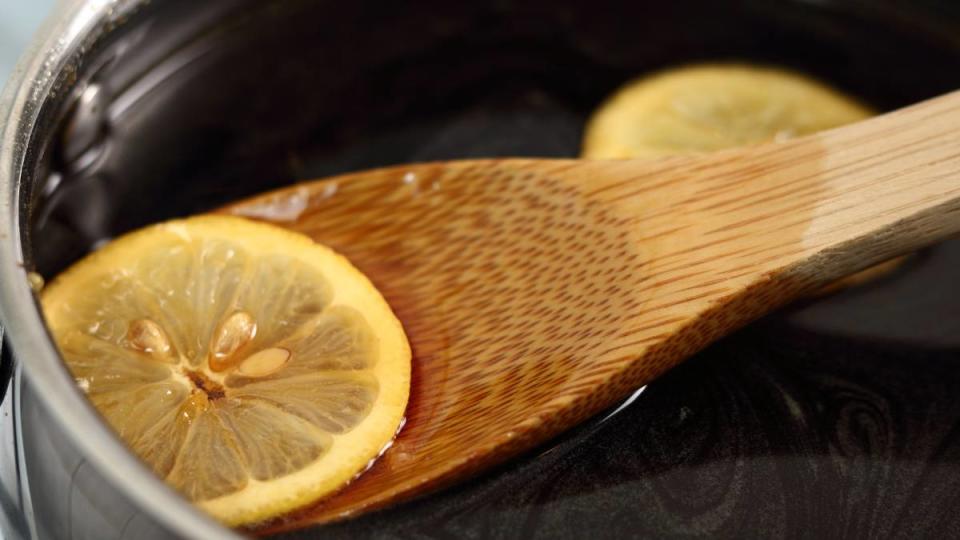How to Whiten Socks: Cleaning Pros' Easy Tips + What Not to Do When Washing Them
White socks that stay white are few and far between. It doesn't matter if you wear a pair once or multiple times, they'll either turn gray or what's worse, the bottoms turn a dingy brown color. Unfortunately, a regular run through the wash won't get them back to that sparkling state they were when you bought them. Luckily, First got some much-needed advice from the cleaning pros so your socks can shine once again. Continue reading to learn how to whiten socks and easy ways to keep them white when washing.
How to whiten socks: 4 simple solutions
Before you get to the actual washing, there are a few do's and don'ts to keep in mind when trying to get white socks back to their original state.
Don't wash them inside out. The stains are typically on the soles or bottom of the sock, so if you're trying to get rid of the dirt or dingy look they need to be washed right side up.
Do wash in hot water. Cold water isn't nearly as effective for heavy-duty stains. Hot water will help lift the grime from the socks.
Don't mix any colored clothing. For best results, you'll want to wash white socks separately from other colors and clothing. This ultimately prevents the colors from bleeding and will help keep your socks white.
Also smart: As soon as you notice a stain or discoloration, Shantae Duckworth, professional organizer and founder of Shantaeize Your Space, suggests pre-treating it with a little bit of liquid laundry detergent or a stain remover. "This helps prevent the stain from setting in and makes it easier to remove during washing."
1. Try stripping to whiten socks
Sara McDaniel, designer and home renovation expert with Simply Southern Cottage notes that even though this method is "old-timey," it's one of the best. "Stripping involves filling a tub with water, adding Borax and allowing the socks to soak overnight," she explains. (Click through for the viral laundry stripping recipe that works!)
Borax has a natural bleaching ability and according to McDaniel it's that and its "high level of pH that works to break down stains."Once you've completed this step, you can complete the process by washing your socks like normal in the machine and they'll come out like new.
2. Use hydrogen peroxide and baking soda to whiten socks
We all know baking soda is more than a kitchen staple. So, when you combine it with hydrogen peroxide, you get a quick and easy stain remover. Mix equal parts of both ingredients until it turns into a paste. Apply it to any stained areas of the sock and let it sit for at least 30 minutes and simply wash as usual afterward.
"Hydrogen peroxide is a mild bleach that can safely whiten fabrics," says Duckworth. "When combined with baking soda, it forms a paste that can penetrate and lift deep stains." It's especially useful for targeted stains.
Related: The Simple Method That Will Get Nail Polish Stains Out of Clothes From Laundry Pros
3. Lemon juice can help whiten socks

Another home remedy (that can also be found in the kitchen!) to whiten socks is using a little bit of lemon juice. "Depending on how many socks you plan to whiten, slice two to three lemons and add to a pot of boiling water," says McDaniel. Add in your socks, turn off the heat and allow them to sit overnight.
Throw them in the washer after soaking them and repeat the process until the whiteness is restored. Like the Borax, lemon juice is a "natural bleaching agent and the PH level works to break down stains."
4. Whiten socks with baking soda and vinegar
If you're looking for another quick fix, mix one cup of baking soda and one cup of white vinegar in a bucket of warm water. Duckworth recommends soaking the socks for a few hours or as long as overnight and then washing them for maximum whiteness.
"Baking soda is a mild abrasive that can help lift dirt and grime, while vinegar acts as a natural disinfectant and deodorizer," says Duckworth. "Together, they create a powerful cleaning solution that can break down stains and whiten fabrics without harsh chemicals."
For more home hacks check out these stories:
How to Choose the Right Types of Curtains for Each Room in Your Home
Experts Share How to Get Sunscreen Out of Fabric At Home to Avoid Stains
How to Clean Seashells and Beach Treasures: Experts Suggest These Household Products to Sanitize

